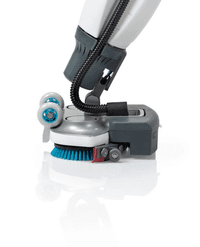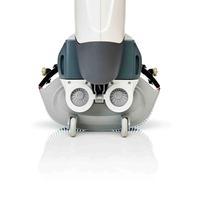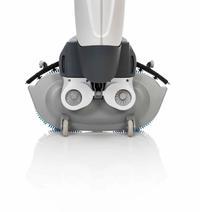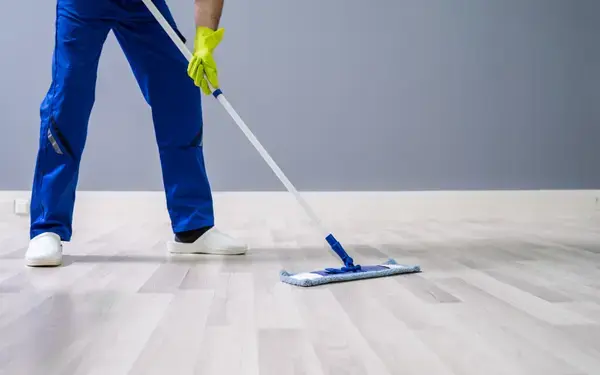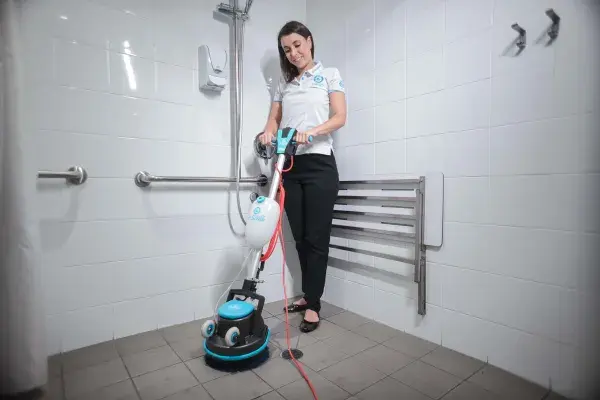You are reading: Why are my floors streaky after I mop?
02 February 2023
9min read time
Brooke Payne
Why are my floors streaky after I mop?
Share:
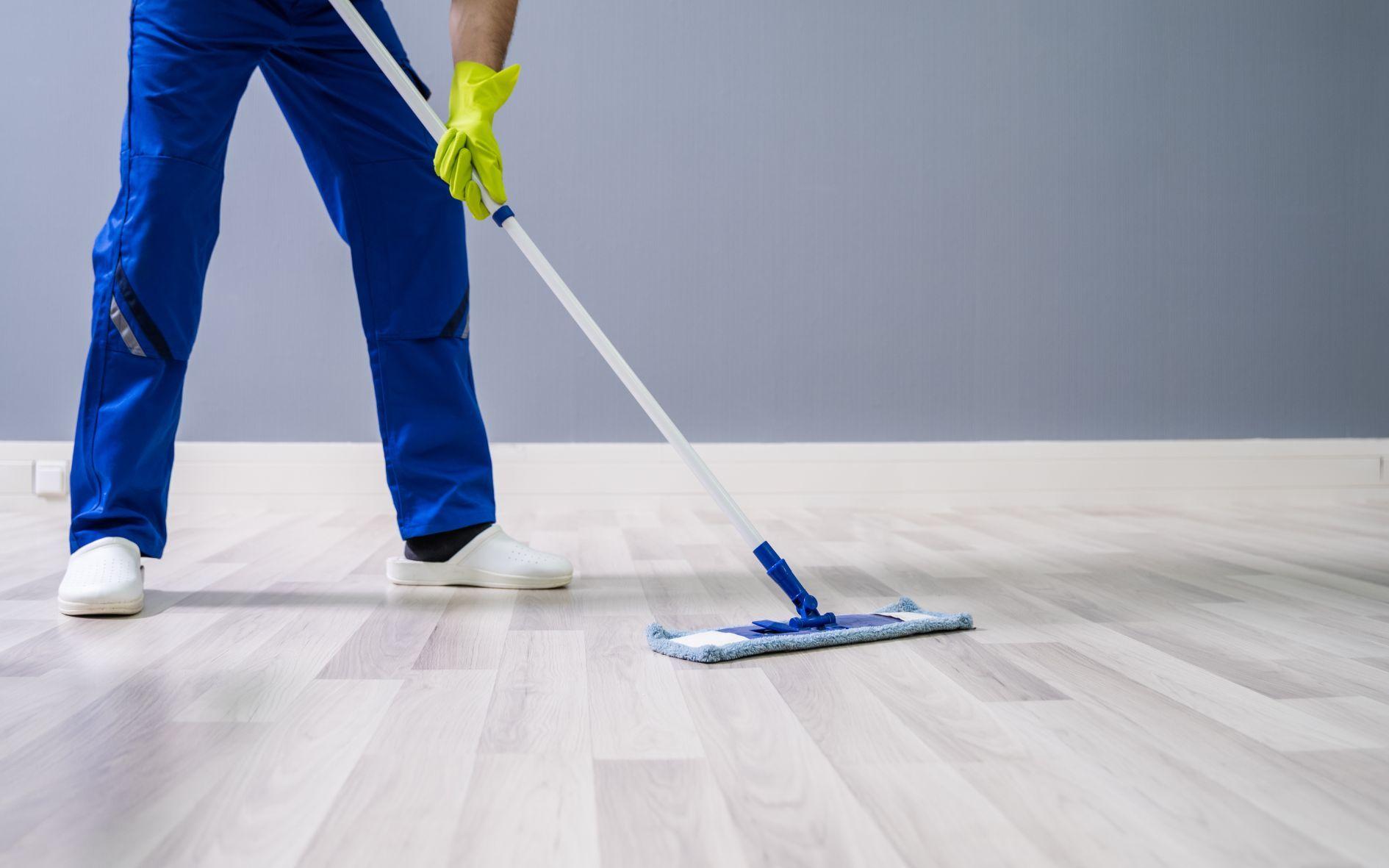
Key Insights
- Using the right mop, with the right amount of liquid, is critical to maintaining clean and streak-free floors
- When excessive amounts of cleaning detergent are used, it can not only result in streaking, but it will also make the floor dirtier faster
- Using the correct type of mop, ensuring that you are using the correct parts on your floor scrubber, practicing the right mopping technique, maintaining your mop clean, and using the right amount of cleaning solution can greatly help
When it comes to keeping your floors clean, it can be frustrating to find that they are streaky even after you’ve just cleaned them. There are several reasons why this might be the case, and a few suggested solutions to address the problem.
Using the Wrong Mop
One of the most frequent reasons that floors appear streaky is the use of an inappropriate mop. String mops and "spaghetti" mops can hold an excessive amount of water and solution, leaving too much water on the floor, resulting in streaks. Microfibre flat mops are normally better, however they too will cause streaking if they are over-saturated with water or cleaning solution.
The key is to use the right type of mop and keep it as dry as possible – while still being damp or wet enough to clean effectively. Using the right mop, with the right amount of liquid, is critical to maintaining clean and streak-free floors.
Too Much Chemical
Another common cause of streaky floors is using too much chemical. When excessive amounts of cleaning detergent are used, it can not only result in streaking, but it will also make the floor dirtier faster. This is because the chemical residues attract and hold onto dirt.
To prevent this issue, it is essential to use the recommended amount of cleaning solution and water for your specific floor type. This not only helps to prevent streaking, but it can also prolong the life of your floor by avoiding any damage from using too much cleaning chemical.

Chemical Buildup
Another potential problem related to chemical residue is the buildup of the residue over time. When floors are repeatedly cleaned with the same chemicals, or if too much cleaning detergent is used, it can lead to a significant buildup of residue on the floor, resulting in dirty floors. This buildup can be hard to remove and can make it difficult to keep the floors clean. The solution is to do a deep clean of your floors, such as using a residential floor scrubber with hot water to remove any built-up residue. This can also be done by hiring a professional cleaner who has the proper equipment and knowledge to do a deep clean.
(Pro Tip: For further insights on this topic, see Understanding pH and cleaning chemicals )
Check the Parts on your Floor Scrubber
If you are using a floor scrubber, you may have streaky floors due to worn squeegee rubbers or incorrect accessories being used on the machine. It's important to use the correct pads or brushes and squeegee rubbers on your floor scrubber in Australia to ensure they will give you the best results, as local conditions can impact performance. Using the incorrect parts may lead to excess water being left behind, or worse still, can cause scratches or damage to the floor. The most common solution is to check your squeegee and suction system for blockages, and if necessary replace your squeegee rubbers with ones better suited to your floor.
You may find some useful tips on this topic in 5 Common Floor Scrubber problems and how to avoid them or Choosing the best floor scrubber squeegee rubbers

Change Up your Technique
Your streaky floors could also be caused from poor mopping technique. An effective way to avoid this is by using a figure-eight motion while mopping. This technique allows you to collect dirt and grime as you pass and capture the maximum amount of soiling on the mop head rather than just pushing it around. By contrast, using a side-to-side motion while mopping can simply shift dirt from one spot to another instead of effectively collecting it and leaving your floors dirty.
Read more in our article on comparing ergonomics of the i-mop floor scrubber against a mop and bucket.
Your Mop is Dirty
Another possible cause of streaky floors is a dirty mop. If you are using a mop that has not been cleaned properly, it can spread dirt and grime instead of picking it up, leaving streaks on your floors. To prevent this, it's important to regularly clean and sanitize your mop and change the water when it gets dirty. You could also consider upgrading from manual mops to mechanical cleaning with a floor scrubber such as the i-mop to truly take your clean to the next level.

To achieve a clean, shiny, and streak-free floor, it is crucial to take several key steps. Using the correct type of mop, ensuring that you are using the correct parts on your floor scrubber , practicing the right mopping technique, maintaining your mop clean, and using the right amount of cleaning solution can greatly help. By following these best practices, you can be assured that your floors will look and feel spotless.
For more information on our range of i-team cleaning solutions such as the i-mop click here or to book a demo or get in contact you can reach us here .
People Also Ask: FAQs
1. How do you get rid of streaks after mopping?
After mopping your floors, use a dry microfiber mop pad or cloth to go over the area. This will help remove any remaining streaks. It may sound contradictory, but this dry pass is essential for a streak-free finish. The key is to avoid letting water sit on your floors for too long!
2. How do you fix a streaky floor?
If you don't apply enough floor finish with your mop, it can lead to streaks on the floor. Fortunately, this issue is easy to fix. A simple scrub and recoat can effectively remove the streaks. To prevent this from happening, make sure not to overwork your mop or wring it out too much during application.
3. Why do my floors have a film after mopping?
Firstly, some cleaning solutions, especially those with harsh chemicals or excessive surfactants, can leave a filmy residue if not rinsed thoroughly. Additionally, using too much water while mopping can saturate the wood, causing it to absorb moisture and resulting in a cloudy appearance.
4. Why are my floors so streaky?
Streaks often result from a mix of residue left by your cleaner and existing dirt on the floor. While all-purpose cleaners may claim to be safe for various surfaces, including wood, it's important to remember that wood is a sensitive material and requires gentle, specialized cleaning to avoid streaking and damage.
5. How do you prevent streak marks when cleaning?
- Clean on a Cloudy Day: Avoid cleaning in direct sunlight, as it can cause the cleaning solution to dry too quickly, leading to streaks.
- Remove Dust and Spiders: Vacuum or dust off any cobwebs, dirt, or debris before you start cleaning to ensure a smooth, streak-free finish.
- Dilute with Distilled Water: Tap water can contain minerals that leave streaks. Using distilled water helps prevent this.
- Use Vinegar: Vinegar is a natural cleaner that can help eliminate streaks without leaving behind residue.
- Try Ammonia: Ammonia-based cleaners can be effective in preventing streaks, but use them carefully and in well-ventilated areas.
- Go Easy on the Suds: Too much soap can leave a residue that causes streaks, so use only a small amount.
- Use a Strip Applicator: A strip applicator or squeegee helps evenly distribute the cleaner and remove excess liquid, reducing streaks.
- Skip the Paper Towels: Paper towels can leave lint and streaks. Instead, use a microfiber cloth or a squeegee for a clear, streak-free finish.
References
Products Featured Inside this Article
Media and Insights
Join the movement that's changing what clean means.
Be part of a cleaner world. Get a live demo at a time that suits you.
Book a Demo